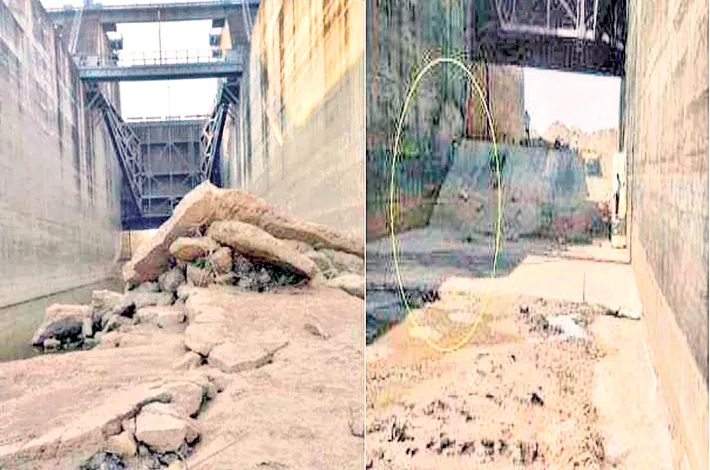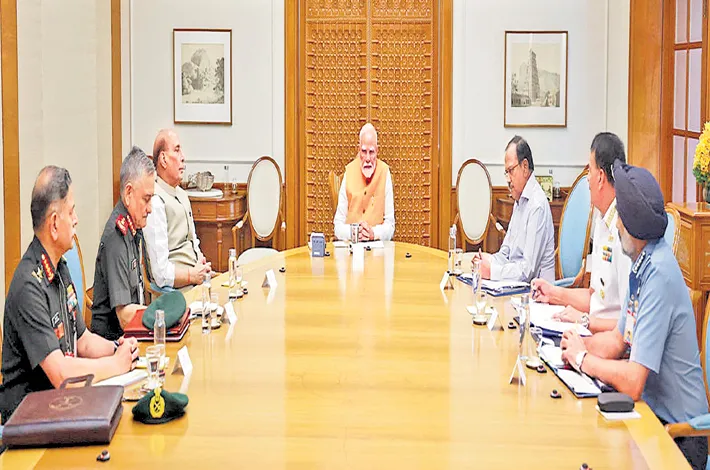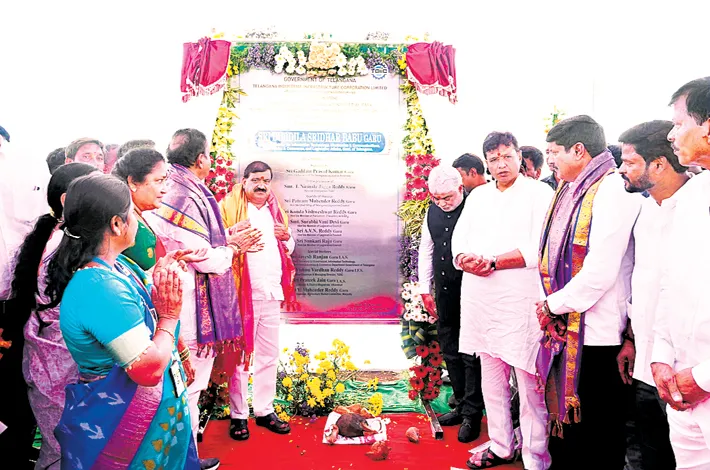Kaleshwaram project, worst man-made failure: NDSA
30-04-2025 12:00:00 AM

■ Call for immediate rehabilitation and Long-term Overhaul
■ The NDSA stresses an urgent recommendation for a holistic rehabilitation strategy, including:
■ Comprehensive geotechnical and geophysical reassessments.
■ Stabilization of distressed structures.
■ Revised hydraulic and structural modelling using advanced software.
■ Strict adherence to dam safety protocols and interdisciplinary collaboration among engineering, geological, and hydrological experts.
Metro India News | Hyderabad
The National Dam Safety Authority (NDSA), under the Ministry of Jal Shakti, Government of India, has submitted a detailed and alarming final report on the structural and operational failures of the Medigadda, Annaram, and Sundilla barrages of the Kaleshwaram Lift Irrigation Project in Telangana. Termed as one of the worst man-made infrastructure failures in Indian history, the report lays bare systemic failures in design, construction, operation, and maintenance.
Catastrophic failure at Medigadda Barrage
The crisis came to light on October 21, 2023, when a structural failure occurred at the Medigadda barrage, with one of the piers (Pillar No. 20, Block-7) sinking. Subsequent inspections by the Chief Engineer and NDSA-led committee uncovered severe cracking, dislodgement of concrete blocks, and hydro-mechanical compromises, indicating deeper systemic issues. Similar patterns of seepage, structural settlement, and damage were observed in the Annaram and Sundilla barrages.
Flawed planning and hastily prepared DPR
The NDSA report notes that the Detailed Project Report (DPR) was prepared in just four months—an unreasonably short duration for a project of this magnitude. The DPR lacked reliable data and comprehensive technical assessments, severely compromising its viability. The decision to relocate the Annaram and Sundilla barrages by 2.2 km and 5.4 km respectively—post agreement with contractors—without updated site investigations further exacerbated risks, leading to significant sedimentation and foundational instability.
Inadequate Geotechnical investigations and Design deficiencies
Geotechnical investigations across all three barrages were grossly insufficient. Only six boreholes were drilled compared to the 85 recommended under the Central Board of Irrigation and Power (CBIP) guidelines. Crucial geotechnical inputs necessary for the Central Designs Organisation (CDO) to formulate safe structural designs were missing.
Additionally, the CDO was largely sidelined during critical phases like investigation and construction, resulting in discrepancies between design and execution. Changes in key structural components, such as replacing sheet piles with secant piles and modifying concrete block specifications, were carried out without thorough technical validation.
Modelling failures and Operational mismanagement
Hydraulic model studies conducted by TSERL, Hyderabad, failed to simulate realistic scenarios such as single-gate openings during pond levels, a routine operational occurrence. This oversight led to frequent hydraulic jumps, resulting in erosion and dislodgement of downstream concrete blocks. Notably, recommendations provided by TSERL regarding gate operations and flow obstructions were ignored by the project execution team, further contributing to the damage.
Safety oversight and Non-compliance with National Dam Safety Act
The NDSA report strongly criticizes the failure to comply with mandatory provisions under the National Dam Safety Act, 2021. Required inspections—pre-monsoon, post-monsoon, and periodic checks—were never conducted. Maintenance records, logbooks, and photo documentation, as mandated by the Act and Indian Standards, were completely absent. The lack of an Operation and Maintenance (O&M) manual and failure to dewater reservoirs for necessary repairs after the first signs of distress in 2019 reflect gross negligence by the implementing agencies.
Absence of Quality Control and oversight
The report underscores the lack of quality control during construction, particularly regarding the watertightness of cutoff walls and their integration with the foundation rafts. Inconsistent construction practices across barrages—such as rigid versus floating structures—were also cited. Importantly, several revisions to the original designs were made under pressure from higher authorities, undermining engineering principles and structural integrity.








